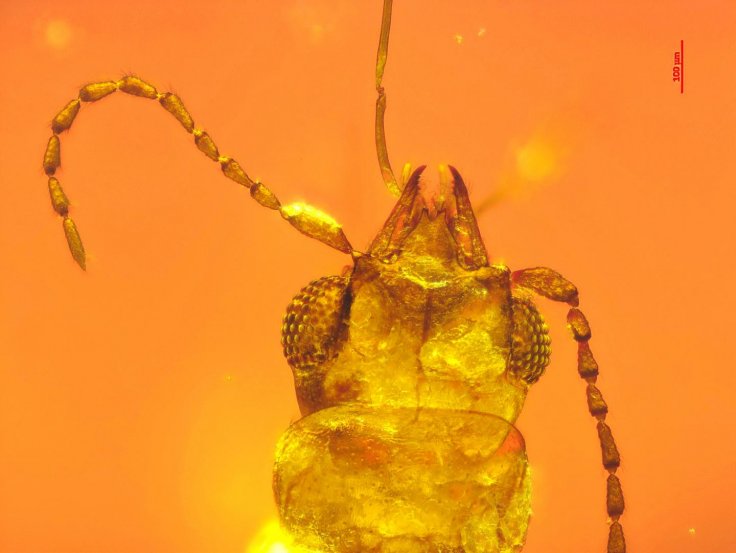
Earlier scientists have found ancient ticks, world's oldest snake and frog from the fossilized tree sap called amber. Now the same substance has helped the palaeontologists to discover almost 100-million-year-old Boganiid beetles with bits of pollen still around it.
As per the study paper, which was published in Current Biology, stated that the Cretaceous Period beetle is considered as the earliest pollinating insects and was perfectly preserved inside the amber that is believed to be nearly 100-million-years-old. The study also included that this ancient insect also showed some special adaptations, including mandibular patches, for the transport of cycad pollen.
A researcher at the University of Bristol, Chenyang Cai, who was involved in this study said that "Boganiid beetles have been ancient pollinators for cycads since the Age of Cycads and Dinosaurs. Our find indicates a probable ancient origin of beetle pollination of cycads at least in the Early Jurassic, long before angiosperm dominance and the radiation of flowering-plant pollinators, such as bees, later in the Cretaceous."

Researchers believe that this discovery has opened a new window into the ancient world and helped them to make a timeline of the pollinating insects that were previously not cleared.
When the Cai first showed the beetle inside the amber to his supervisor Diying Huang at the Nanjing Institute of Geology and Palaeontology, Chinese Academy of Sciences, Huang recognized its large mandibles with bristly cavities and suggested that this beetle was a pollinator of cycads.
After conducting further research and consulting with Liqin Li, an expert in ancient pollen at the Chinese Academy of Sciences, Cai came to know that several clumps of tiny pollen grains, which the tiny insect was carrying that belonged to a cycad.
Researchers also claimed that this beetle had a relative that date back to the previous Jurassic Period. Cai said that there is a possibility that beetle pollination of cycads had evolved before the partition of the supercontinent, known as Gondwanaland around 167 million years ago.
Cai told Gizmodo that such an exceptionally well-preserved fossil beetle discovery is absolutely surprising. In addition, he also said, "Our finding indicates a very ancient origin of beetle pollination of cycads at least in the Early Jurassic, long before the [emergence and spread] of flowering plants and their pollinators—such as bees and butterflies—later in the Cretaceous or later."









